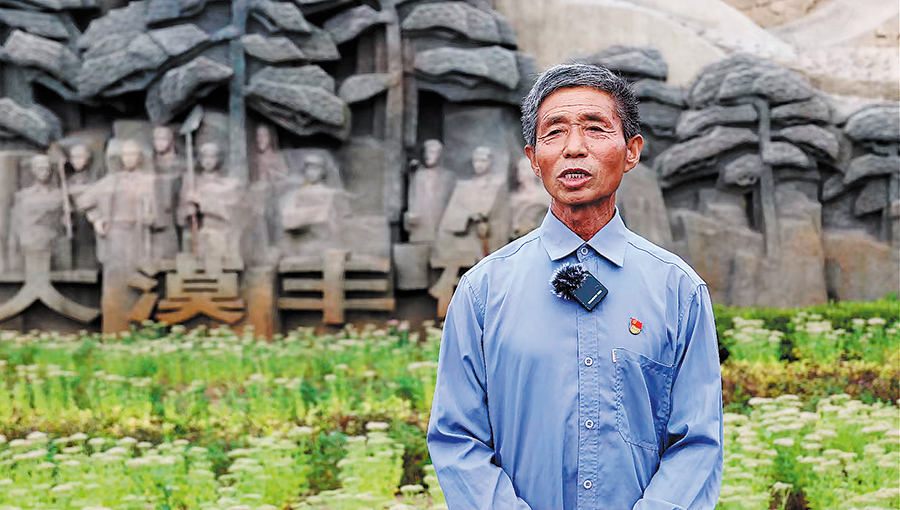Dedicated digger plants forests to stave off sand
Hou Gui has spent decades protecting the farmland of his village in Liaoning


Over the past 24 years, Hou Gui has tirelessly dedicated himself to planting trees and protecting the forests up in the mountains, living in a simple house in the woods and rarely even looking at his phone.
If outsiders want to contact him, they have to call his wife first.
"The trees behind the fence are the ones I planted years ago," said Hou, pointing at a row of pines. "Even if the wind picks up, it's not going to move much sand anymore."
Hou, 73, is from Liujia village in Zhangwu county, Liaoning province. The area is located on the southern edge of the Horqin Sandy Land, which has been plagued by sandstorms historically.
In the spring of 1999, just after the villagers had finished planting, a sandstorm swept through and buried every single sapling. The sight of the spoiled crops deeply saddened Hou.
Responding to the national call to resist the spread of shifting sands, something that can decimate arable land, he pledged to his fellow villagers that he'd take up the mantle of planting trees around the village to control the sand and protect the farmland.
Hou resigned from his position as the village committee director, pooled his savings with his family and took on the contract to take over an area of shifting sands at Sihecheng Forest Farm.
The Horqin Sandy Land is one of the closest sources of sand and dust to Beijing. Decades ago, there were vast shifting sand dunes in the area.
Hou recalled what life was like at that time. "Sometimes the sandstorms would blow all night long, and in the morning, we couldn't even push our doors open because they'd been blocked by the sand blown in."
There is a local saying: "Wind comes only once a year, but lasts from spring to winter."
At the beginning of his afforestation efforts, Hou was repeatedly troubled by sandstorms.
Planting trees on sandy land is a difficult task within itself, and with frequent strong winds, the first batch of saplings planted were quickly submerged in sand.
After several further setbacks, Hou set about employing methods such as creating grass grids, persisting for years, gleaning experience and gaining success one step at a time. In the past 20 years, he has planted over 200,000 trees such as Mongolian Scot pines and red pines on 160 hectares of sandy land.
























